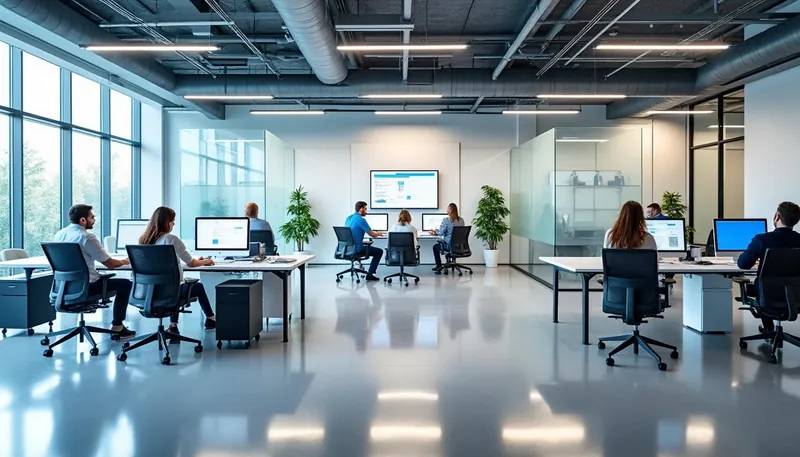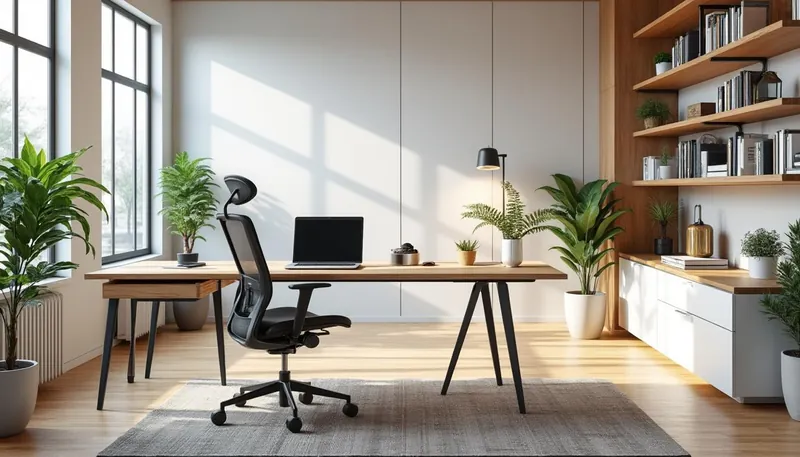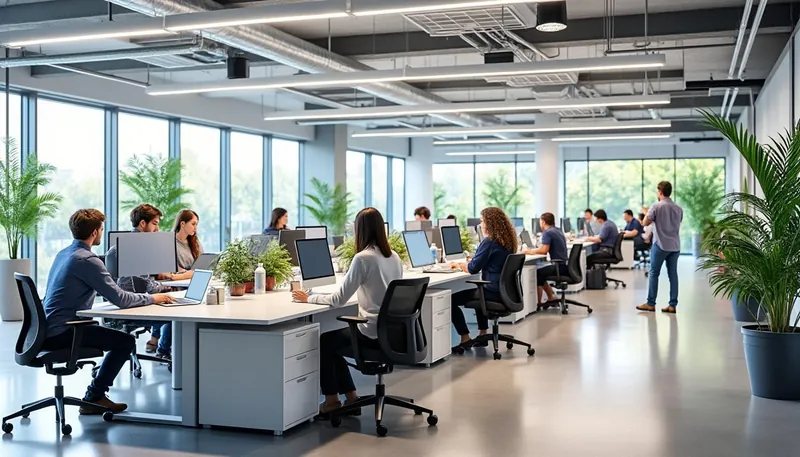Finding the right mix of aesthetics and functionality in your office design is key to creating an inviting and efficient workspace. In today’s fast-paced work environment, the look and feel of your office can significantly impact not just how your office operates, but also how your employees feel about being there. Striking the perfect balance means considering how everything from your layout to the colors you choose work together to promote productivity and comfort. Let’s dive into how you can create a space that is not only visually appealing but also serves its purpose effectively.
Brief
- Office designs that inspire creativity and collaboration are essential to today’s work culture. 💡
- Select furniture that merges style with practicality to meet various employee needs. 🪑
- Choosing the right color palette can supercharge productivity and enhance mood. 🎨
- Strategic lighting can transform an entire office ambiance, creating a welcoming vibe. 💡
- Incorporating smart storage solutions keeps spaces organized and stylish. 📦
Design Layouts That Work in Modern Offices
Creating an optimal office layout is foundational to balancing aesthetics and functionality. The office should encourage collaboration while maintaining areas for focus and concentration. This means that not only should your open spaces be wide and accommodating, but also that quieter zones are strategically placed away from noisy collaboration areas. This thoughtful zoning creates an environment where different working styles can flourish. 🚀
Consider the following elements when designing your layout:
- Flexibility: Design flexible spaces that can adapt to various team sizes and functions. Moveable walls or furniture can transform an area for various uses. 🔄
- ADE Compliance: Ensuring your space is accessible is not just about being compliant; it demonstrates a commitment to inclusivity. Wide aisles and accessible furniture create a welcoming atmosphere. ♿
- Open vs. Closed Areas: Balance large open areas for teamwork with smaller meeting rooms for private discussions. This creates a fluid workspace that accommodates varying needs. 🏢
| Layout Type | Benefits | Considerations |
|---|---|---|
| Open Office | Encourages collaboration and easy communication. | Can be noisy; plan for quieter areas. |
| Private Offices | Enhances focus and privacy for important tasks. | May reduce collaboration; ensure team connectivity. |
| Hybrid Layouts | Combines the best of both worlds, supporting teamwork and focus. | Requires careful planning to avoid clutter. |

Furniture That Checks All the Boxes for Style and Function
The choice of office furniture is crucial in merging aesthetics and functionality. Employees spend a significant amount of time in their workspace, so choosing ergonomic furniture is not just a trend, it’s essential for promoting well-being. Ergonomic chairs, adjustable desks, and stylish meeting tables are perfect examples of how to maintain both form and function. 🪑
What to focus on when choosing your office furniture:
- Comfort and Ergonomics: Look for chairs and desks that promote good posture and reduce strain over long periods. This investment pays off by enhancing productivity. 🔍
- Design Theme: Select furniture that harmonizes with your overall design aesthetic—whether that’s modern, industrial, or minimalist. 🏢
- Multi-Functionality: Opt for furniture that serves multiple purposes to save space and enhance usability, like desks that double as conference tables. ↗️
Functional furniture should not compromise on style. When aesthetics and practicality intersect, the workspace can become a place of inspiration and motivation. It’s essential that your office looks good while helping your team perform at its best.
| Furniture Type | Style Attributes | Functional Attributes |
|---|---|---|
| Ergonomic Chairs | Sleek and modern look. | Support for long hours of work. |
| Adjustable Desks | Contemporary design. | Flexible height for standing and sitting. 💼 |
| Multi-Purpose Tables | Stylish with clean lines. | Can be used for meetings or collaborative tasks. 🖊️ |

Color Schemes That Drive Productivity and Aesthetics
Colors have a profound impact on mood and productivity. The right color palettes can invigorate your workspace and influence how employees feel throughout their workday. For example, cool tones like blue promote focus, making them suitable for work areas, while warmer colors like yellow stimulate creativity in collaborative spaces. 🎨
Here’s how to effectively use color in your office design:
- Cool Tones for Focus: Blues and greens can lead to calm and concentration, ideal for areas meant for deep work. 🖌️
- Warm Accents for Energy: Use yellows and oranges sparingly for areas designed for brainstorming to infuse energy without overwhelming. 🌞
- Neutral Bases with Bright Accents: A neutral palette allows for bright accents that can energize the space, creating visual interest without chaos. 🎈
| Color Category | Impact on Mood | Best Use Location |
|---|---|---|
| Cool Colors | Promote calmness and focus. | Workstations and offices. 🌊 |
| Warm Colors | Stimulate emotion and creativity. | Breakout areas or creative zones. 🎨 |
| Neutral Tones | Provide balance and a clean look. | Common areas and hallways. 🤍 |
Lighting’s Role in Creating Functionality and Aesthetic Appeal
Lighting plays a crucial role in both the usability and the aesthetics of your office. Poor lighting can create an unwelcoming atmosphere and negatively impact morale. Aim for a blend of natural light and smart artificial lighting to keep energy levels high and distractions low. 💡
Explore the various lighting strategies:
- Natural Light: Utilize large windows or glass walls to invite daylight, which enhances mood and productivity. 🌞
- Task Lighting: Install adjustable task lights at workspaces to minimize glare and provide adequate lighting for focused tasks. 💻
- Ambient Lighting: Strategically use ambient lighting to create a warm and inviting atmosphere without harshness. 🔆
| Lighting Type | Benefits | Best Application |
|---|---|---|
| Natural Light | Boosts mood and reduces eye strain. | Open workspaces and meeting rooms. |
| Task Lighting | Enhances focus and reduces distractions. | Personal desks and workstations. 🔌 |
| Ambient Lighting | Creates a warm atmosphere. | Common areas and break rooms. 🌟 |
How can I ensure my office design is ADA compliant?
By creating wide open spaces and ensuring furniture placement allows for accessibility.
What types of colors are best for productivity?
Cooler colors like blue and green are great for focus, while warm colors like yellows can energize creative spaces.
How can I maximize small office spaces?
Utilize multifunctional furniture and smart storage solutions to optimize every inch of space.
What role does lighting play in office design?
Proper lighting minimizes distractions and enhances the ambiance, contributing to employee wellness.
Can I prioritize aesthetics over functionality?
While aesthetics matter, a functional design directly impacts productivity. It’s best to find a harmonious balance.


